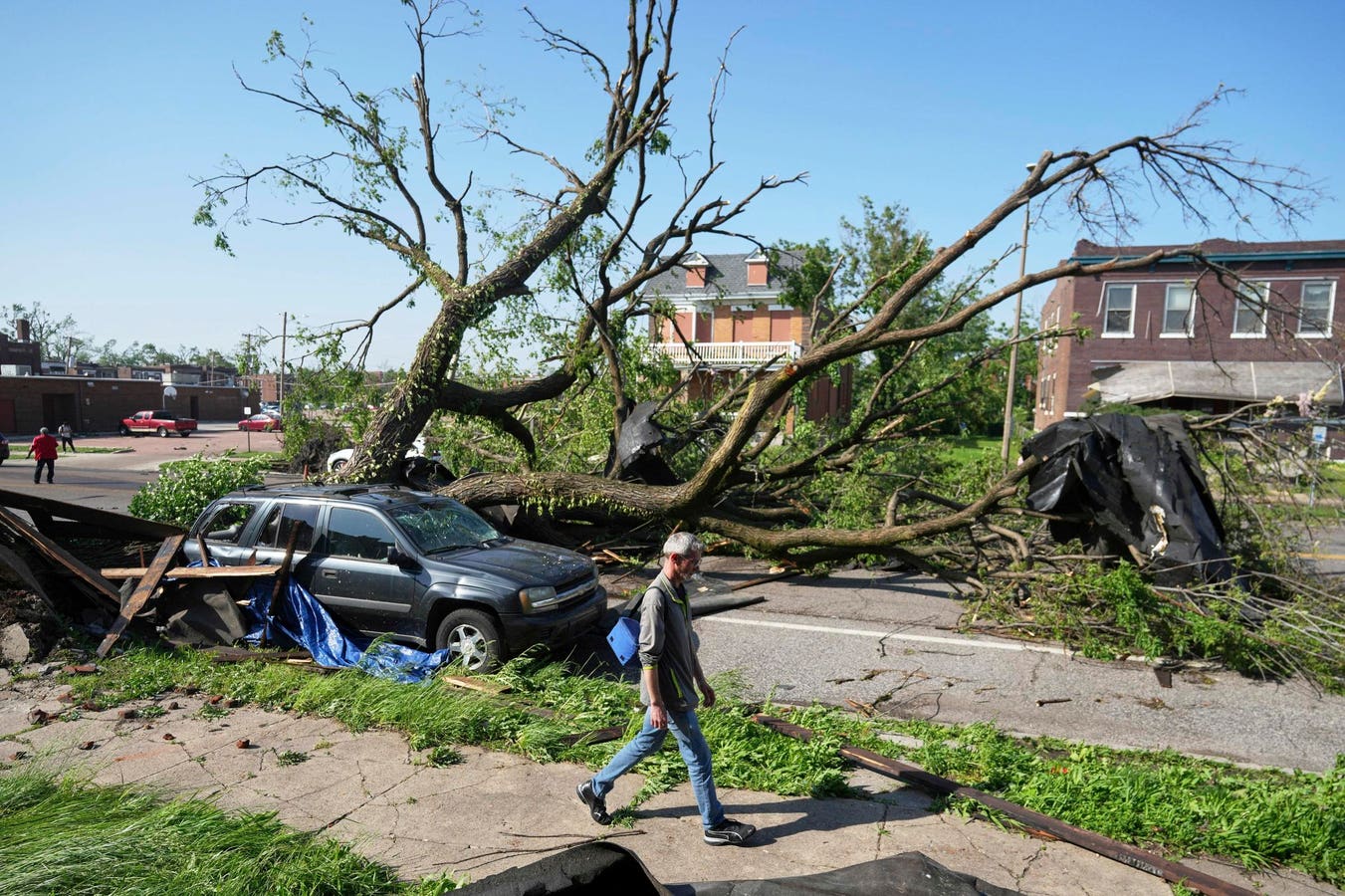A new large-scale study reveals the real risks that are shaping our lives in 2025, and they’re likely nothing like you’d imagine.
getty
Psychology has portrayed “risk-takers” in a familiar way over the past few decades: as skydivers, gamblers, motorcyclists, partygoers and thrillseekers. But in 2025, this archetype seems to be outdated. Risky life choices, as it seems, aren’t limited jumping out of a plane.
Our world has changed much faster than our theories have. Today, risk is no longer just an extension of adrenaline seeking or recklessness. Instead, we see it on LinkedIn, in cryptocurrency markets and even the most mundane tasks that structure our everyday life.
A new large-scale study published in Psychological Science, involving more than 4,000 participants, has offered us a more accurate and up-to-date illustration of the “ecology of risk” in modern life. Instead of presenting participants with hypothetical gambles they could make, authors Renato Frey and Olivia Fischer asked them to describe a real risky choice they had personally faced, or one encountered by someone in their social network.
With this discovery-oriented approach, Frey and Fischer curated a list of the top 100 risky decisions most relevant to people today. Notably, four choices appeared far more frequently than the rest. And together, they paint a remarkably different picture of what it means to be a risk-taker in 2025.
1. Accepting A New Job
The most commonly reported risky choice was something that would seem deceptively ordinary to some: accepting a new job offer. But in today’s highly dynamic labor market, accepting a job offer is anything but the tame, linear step it may have once been considered.
Although we often reduce our careers as being one of the more boring aspects of our lives, they are one of the greatest contributors to our livelihood. This makes it unsurprising that job-related choices dominated the list of the most frequently reported risks. As Frey explained to me in an interview, “We were quite surprised to see that, overall, people reported the most risky choices from the occupational domain.”
As Frey explained, the risk of this choice lies in uncertainty — specifically the kind that stems from things we could, in principle, know with more information: What will my new coworkers be like? Will the company be more or less stable than my current one? Will I fit in with everyone else?
Of course, we try to reduce this uncertainty through interviews, research and conversations but there’s no way for it to disappear entirely. Taking a new job demands us to accept that we are stepping into a future that we will never be able to fully forecast, even with diligence and care.
2. Quitting A Job Without Another Lined Up
Of all the job-related risks we can take, resigning from a job without having future employment secured is perhaps the riskiest of all. Yet surprisingly, it’s the second most common risky choice of modern life. Compared to accepting a new job, the risk of quitting is both more immediate and more existentially threatening: income instability, career gaps, social pressure, the fear of miscalculation.
Interestingly, Frey and Fischer noted that many of the most consequential risks people take don’t necessarily always describe an active decision. As Fischer explained in the interview, “It was interesting to see that, although one might associate risk taking with actively engaging in a particular behavior, in several cases, people reported choices in which the risky option consisted of inaction: not getting insurance, not doing prenatal tests during pregnancy, remaining abroad instead of moving back home”
Quitting without having made a back-up plan is among these risky inactions. But unlike traditional thrill-seeking behaviors, this risk is woven into the long arc of one’s life story. What makes it so especially risky is that it reflects both the kinds of uncertainty that psychologists differentiate between:
- Epistemic. Uncertainty that stems from a lack of knowledge or data. In quitting a job, the uncertainty lies in not knowing: Is something better out there? Was this a bad idea? Will I find something else in time?
- Aleatoric. Uncertainty that stems from randomness or variability. In resigning, this uncertainty lies in the lack of control or predictability one has over the situation: How long will my savings last? When will the right job appear?
3. Investing Money
Financial risk-taking has always existed, but its emerging modern forms are famously volatile and elusive. Participants within the study frequently cited having their money tied up in investments into stocks, cryptocurrency and trading platforms.
Although investing isn’t new, it is arguably riskier today than at any other point in recent memory. That’s not only because markets themselves move faster, but because the forces shaping our decisions have changed. A generation ago, investing was largely guided by our personal financial goals and professional advice. But today, it’s shaped by algorithmic nudges, influencer hype, frictionless trading apps and 24/7 global markets that make reacting (or perhaps overreacting) nearly irresistible.
There is, however, an even deeper psychological layer to modern investing: it sits uncomfortably close to gambling.
That said, 2021 research from the Journal of Economic Psychology shows that most people implicitly categorize gambling and investing as two sides of the same psychological coin. As this study explains, people tend to form judgments based on the most immediate and memorable information available to them. And culturally, we hear far more stories about losing money in gambling and making money in investments than the reverse.
This imbalance leads to a predictable cognitive pattern: gambling is viewed as the domain of losses, and investing is viewed as the domain of gains.
Because of this, the same monetary gamble feels far more threatening when it’s labeled “gambling” than when it’s framed as an “investment.” But in reality, hitting “buy” on a crypto app is psychologically closer to pulling a lever in a casino than most people would care to admit. Except, the casino never closes, it updates every second and it even sends push notifications directly to your phone.
4. Driving A Car Under Risky Conditions
Not all modern risks are novel. Driving (especially while fatigued, distracted, during bad weather or while intoxicated) is still one of the most frequently cited risky behaviors. What has changed, however, is the context: long commutes, climate-related weather extremes, digital distractions and chronic overwork.
Driving may seem mundane compared to investing in crypto or launching a business, but it remains one of the most consequential risks people take. However, it’s also one of the deadliest. In 2023 alone, 40,901 people died in motor vehicle crashes in the United States, according to the Insurance Institute for Highway Safety (IIHS).
The economic burden is staggering, too: an estimated $340 billion in annual costs stemming from accidents, injuries and property damage. Sadly, the IIHS notes that the majority of this death toll comes from preventable causes like alcohol use, speeding, distraction and failure to wear seat belts.
Driving under precarious conditions is one of the most dangerous decisions we could ever make, yet it’s still also one of the most routine risks we take. And because it’s a choice that’s so firmly embedded within our daily lives, we also tend to underestimate its potentially horrific consequences.
A New Definition Of Risk-Taking
These five choices reveal a serious shift in how risk operates in modern life. Specifically, we know now that risk-taking in 2025 is:
- much more understated than the thrill-seeking stereotype suggests
- more occupational- or career-related than it is recreational
- embedded in within the structures of our everyday lives
- driven by a certain degree of uncertainty that can’t quite be reduced
As Frey put it, “We know that people differ in terms of their general risk preferences — that is, whether someone on average rather seeks or avoids risks. That said, most decisions are strongly state-specific, meaning that they heavily depend on the current situation and context.”
In other words, the modern risk-taker isn’t an adrenaline junkie or someone who seeks danger for sport. They’re far more likely to be a person making consequential choices in a world where certainty is increasingly rare. It could be someone you know navigating a career shift, financial instability, unpredictable markets or structural pressures that previous generations never faced.
And more often than not, being “risky” in 2025 involves decisions that are both thoughtful and common: leaving a job, starting a business, investing savings or simply getting behind the wheel during a storm. This reflects the fact that nine out of ten risks come from a willingness to move forward, despite knowing that perfect information will never come.
Do you make risky life choices for the thrill of it? Take this science-backed test to find out if you’re sensation seeker: Sensation Seeking Scale









